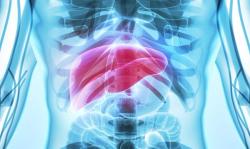
OR WAIT null SECS
Gout Prevalence High Among Patients With End-Stage Real Disease
A recent study reveals a significant prevalence of gout in end-stage renal disease patients, highlighting the complex relationship between kidney function and uric acid levels.
Patients with end-stage renal disease (ESRD) have a high prevalence of gout according to a new study.1
“We review the current literature to discuss the possibility of using uric acid as an indicator of renal impairment. A lot of research has been done for years to prove the relationship between chronic kidney disease (CKD) and gout. The association between gout and CKD is described as mutual, and CKD is an independent risk factor for gout,” lead investigator Heba Abuhelala, Department of Medical Laboratory Sciences, Faculty of Medical Technology, University of Tripoli, Libya, and colleagues wrote.1
Abuhelala and colleagues evaluated 121 samples from patients with ESRD from at the Tripoli Kidney Services Center between April and July 2022. They analyzed the samples, which came from females with a mean age of 54.2 and males with a mean age of 56.4, for urea, creatinine, and uric acid.
They found that all urea and creatinine results were high, with male urea results having a mean of 146.984 mg/dL and the female urea results having a mean of 146.982 mg/dL. For creatinine levels, females had a mean of 8.63 mg/dL and males had a mean of 8.48 mg/dL. The investigators found that uric acid clearance had no relationship with urea and creatinine clearance during dialysis.
The investigators also found that males had slightly higher uric acid levels (mean, 7.04 mg/dL) than females (mean, 6.87 mg/dL), although this was not statistically significant. Overall, the prevalence of gout among patients with ESRD in the study was 46.3% (P< .000) and was specifically 46% in males and 47% in females.
“The study was conducted on patients with ESRD stage 5 of chronic kidney disease to study the prevalence of gout, which was originally a disorder in the metabolism of purine, but in the case of patients with renal failure, the main cause is an impairment in the secretion of uric acid by the kidneys. The other problem is that uric acid does not decrease after a dialysis session, such as urea and creatinine, and it needs special treatments,” Abuhelala and colleagues wrote.1 “We aspire to link the mutual relationship between gout and chronic kidney diseases for gout sufferers and non-infected people and to study the impact of gout on the kidneys and kidney impairment on the development of gout, on a larger number of cases and over a longer period of time.”
In other recent research on gout in people with CKD, results were reported last month from the phase 4 PROTECT trial that demonstrated that pegloticase properly managed serum urate levels and provided clinical and quality of life (QOL) benefits in kidney transplant (KT) recipients with gout.2
Investigators found that found that 89% of patients reached and maintained a SU of less than 6 mg/dL during Month 6. QOL measures also meaningfully improved over the 24 weeks of treatment, with a mean change of -0.3 (95% CI, -0.6 to 0.1) on HAQ-DI from baseline, a mean change of -35.5 (95% CI, -54.5 to -16.5) on HAQ-Pain, a mean change of -22.4 (95% CI, -39.5 to -5.2) on HAQ-Health, and a mean change of -2.4 (95% CI, -3.7 to -1.1) on PhGA from baseline. Furthermore, mean arterial BP fell by an average of -6.8 (95% CI, -12.5 to -1.0) from baseline and 3 of 7 participants (42.9%) with tophi at baseline had at least 1 tophus resolve.2
REFERENCES
Abuhelala H, Alsharif H, Abdulatif A, Abukel I, Elyounsi N. Prevalence of Gout in End-Stage Renal Disease Patients. AJMAS. 2025;8(2):679-689. doi: 10.54361/ajmas.258221
Abdellatif A, Zhao L, Obermeyer K, Vranic Z, Marder BA, Scandling JD. Quality of life improvements and clinical assessments in kidney transplant recipients undergoing pegloticase treatment for uncontrolled gout: findings of the phase 4 PROTECT clinical trial. Front Immunol. 2025;16:1516146. Published 2025 Mar 13. doi:10.3389/fimmu.2025.1516146


